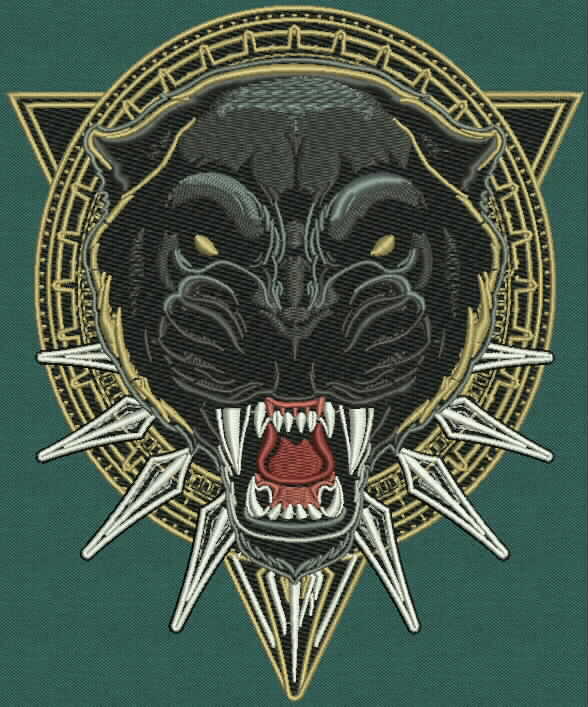Comprehensive Digitizing for Embroidery: From Design to Stitch
Comprehensive Digitizing for Embroidery: From Design to Stitch
Blog Article
Simplifying the Art of Needlework Digitizing: Step-by-Step Guide
As innovation continues to development, the digitization process has ended up being much more obtainable, enabling fanatics to bring their elaborate designs to life with simplicity. In this guide, we will untangle the complexities of needlework digitizing, damaging down each step systematically to enhance the process and encourage both novices and skilled embroiderers alike.
Recognizing Embroidery Digitizing Software Application
Needlework digitizing software application acts as an important device for transforming detailed layouts into electronic layouts compatible with needlework equipments, assisting in accurate stitching and modification. This specific software application allows customers to import various picture file layouts, such as JPG or PNG, and convert them right into embroidery machine-readable layouts like DST, EXP, or PES - Digitizing for Embroidery. By making use of attributes like stitch modifying, underlay alternatives, and string shade selection, digitizing software program makes it possible for users to control every facet of the style process
Moreover, advanced embroidery digitizing software application offers tools for creating intricate layouts, readjusting stitch density, and integrating elaborate information. Customers can likewise preview the style before sewing it out, making sure accuracy and minimizing errors. Additionally, several software application programs provide automated functions that assist streamline the digitizing procedure, saving effort and time.
Recognizing the abilities of embroidery digitizing software application is crucial for achieving top quality cause needlework jobs. By mastering this device, embroidery enthusiasts and specialists can unleash their creativity and bring elaborate styles to life with accuracy and effectiveness.

Choosing the Right Layout Documents
After familiarizing on your own with the capabilities of embroidery digitizing software, the next vital step in the process is choosing the ideal layout documents for your task. Digitizing for Embroidery. When choosing a style declare embroidery digitizing, it's important to think about the complexity of the layout, the size of the final item, and the kind of textile you will certainly be dealing with
For intricate designs with fine details, a high-resolution image or vector documents is advised to guarantee that the needlework device can precisely recreate the layout. Additionally, the dimension of the end product plays a significant function in picking the ideal design documents. Bigger styles may need greater resolution data to maintain quality and sharpness.
Furthermore, the sort of fabric you will certainly be embroidering on affects the choice of layout file. Different materials might require modifications in the layout data to make sure that the stitches are properly lined up and the style looks like intended. By meticulously choosing the best style data based upon these variables, you could try these out you can establish yourself up for a successful needlework digitizing process.
Digitizing Devices and Methods
Making use of specialized software and precision techniques, digitizing tools are vital in transforming elaborate styles right into embroidery-ready documents. Embroidery digitizing software program, such as Wilcom, Hatch, or Embrilliance, supplies the needed system to transform art work right into stitch data. These programs offer functions like stitch modifying, underlay alternatives, and text devices to make sure the layout equates flawlessly onto fabric.
One of the vital strategies in digitizing is creating a clear course for the embroidery equipment to comply with. This involves digitizing each component of the style with accuracy, determining stitch types, thickness, and instructions. By utilizing devices like digitizing tablets or software-specific plugins, embroiderers can attain a high Click Here degree of precision in their digitized designs.
In addition, understanding the art of underlay sewing is critical for creating quality needlework. Underlay stitching stabilizes the textile and creates a foundation for the layout, guaranteeing that the end product is both visually appealing and resilient. By recognizing these digitizing devices and strategies, embroiderers can raise their craft and bring complex layouts to life with accuracy and effectiveness.
Customizing Stitch Types and Directions
Having developed a structure in digitizing devices and methods, a crucial element in advancing embroidery workmanship hinges on personalizing stitch kinds and directions with precision and function. The selection of stitch kinds can dramatically influence the overall look and texture of the embroidered style. Satin stitches, understood for their smooth and glossy surface, job well for developing borders and message. On the various other hand, fill stitches are perfect for covering larger areas effectively. By tactically integrating these stitch types, embroiderers can attain depth and measurement in their styles.
In addition, the instructions of stitches plays a vital duty in enhancing the aesthetic charm of the last embroidery. By experimenting with different stitch angles and patterns, embroiderers can bring click this their styles to life with exceptional detail and ins and out.
Screening and Refining Your Digitized Style
To make certain the precision and high quality of your digitized design, extensive screening and refinement are essential action in the embroidery digitizing procedure. Once you have actually finished the digitization of your design, it is important to check it prior to waging the actual needlework. Checking permits you to recognize any kind of potential problems such as thread breaks, stitch density troubles, or design distortions that might influence the result.

After screening, it is crucial to improve your digitized style based on the comments from the examination sew-out. This may involve tweaking sew settings, changing densities, or making modifications to the overall layout to attain the desired outcome. By repeating via testing and improvement, you can tweak your digitized layout to excellence before progressing with the real embroidery procedure.
Verdict
Finally, grasping the art of needlework digitizing requires a comprehensive understanding of the software, choosing the right layout file, making use of digitizing devices and methods, personalizing stitch types and directions, and testing and refining the digitized style. By adhering to these actions, embroiderers can simplify the digitizing procedure and develop high-grade stitched layouts with accuracy and effectiveness.
Report this page